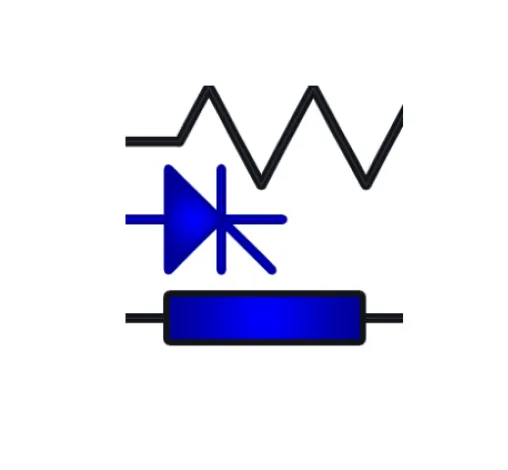10 Results for the search "Components":
AC and DC components meter
Description:
This example contains a device which calculates the DC and AC components.
- The DC component is available in the DC control scope with half
a cycle delay versus the simulation time
- ... see moreThe AC component is available in the DC control scope with one
cycle delay versus the simulation time
Once the maximum DC magnitude is reached, the time constant is
determined assuming the DC decay is exponential and uninterrupted
Tag(s): DC, AC, exponential, meters, zero-crossing, asymmetry, fault
Indirect-Lightning Performance of Overhead Distribution Networks With Complex Topology
Description:
The paper deals with the evaluation of the indirect-lightning performance of overhead distribution networks. The novelty of this contribution is that it takes into account the inherent complexity of d... see moreistribution networks. These networks are indeed characterized by a plurality of lines (main feeder and laterals) and also by the presence of typical power components (e.g., transformers and surge arresters); they consequently differ considerably from the straight line configuration generally adopted in this type of studies.
To accomplish such an evaluation we have extended the general procedure already presented in a previous paper based on the use of the LIOV code along with the Monte Carlo method. The extended procedure combines the advantage of the LIOV-EMTP computer code—that allows the calculation of lightning-induced voltages in complex distribution networks—with a heuristic technique specifically developed and integrated in the Monte Carlo routine in order to reduce the computational effort. The application of the proposed procedure to a set of distribution overhead networks characterized by different topologies, but all of the same length, shows that, in general, the usual single straight-line approach may result into a misestimation of the indirect-lightning performance. The paper also analyzes and discusses the influence of both the line terminations, and the position of the line poles.
Authors: Alberto Borghetti, Senior Member, IEEE, Carlo Alberto Nucci, Fellow, IEEE, and Mario Paolone, Member, IEEE
IEEE TRANSACTIONS ON POWER DELIVERY, VOL. 24, NO. 4, OCTOBER 2009
Tag(s): LIOV-EMTP, lightning-induced overvoltages, lightning performance, power quality, distribution systems, overhead power lines.
Simulation of the Volt/Var Control in Distribution Feeders by Means of a Networked Multiagent System
Description:
The adoption of networked multiagent systems (MAS) has been recently proposed for the solution of the volt/var control (VVC) problem in distribution feeders. However, constraints and limitations due t... see moreo the communication network, to the dynamic behavior of power system components and regulators, as well as to the measurement uncertainties of the adopted sensors need to be specifically analyzed for the design of the MAS. For this purpose, a cosimulation platform has been built by the integration of two simulation tools:
1) the electromagnetic transient program EMTP-rv; and 2) the communication network simulator Riverbed-OPNET Modeler. This paper presents the modeling and simulation of an asynchronous leaderless MAS-based approach that coordinates the reactive power outputs of a set of power compensators equipped with phasor measurement units via a shared band-limited packet-switched digital communication network. The effects of communication network latency and packet loss on the VVC performances are analyzed for two unbalanced IEEE Test feeders equipped with on-load tap changer transformers. The paper compares the results obtained by using a transmission control protocol (TCP) and a user datagram protocol (UDP), for different levels of background traffic (BT) and different packet discard ratios (PDRs) in the communication links.
Authors: Riccardo Bottura, Student Member, IEEE, and Alberto Borghetti, Senior Member, IEEE
IEEE TRANSACTIONS ON INDUSTRIAL INFORMATICS, VOL. 10, NO. 4, NOVEMBER 2014
Tag(s): Cosimulation, medium voltage distribution feeders, multiagent systems (MAS), networked control systems (NCS), phasor measurement unit (PMU), volt/var control (VVC).
Extra control of machines - IEEE AVR
Description:
The proposed AVR sub-circuit models consist of a few IEEE 421 standard exciter[1] and Power Systems Stabilizer and governor. Don't forget to click the require observed signals in the SM devi... see morece, see Observe and Mechanical Tabs (vd, vq, if, Pmss, Efss, Omega_1, etc.) In this file, many duos and trios combinations of:
Exciter:
- IEEEX1 (dc1),
- IEEEX2,
- IEEEX4,
- IEEET5,
- EXST1,
- EXST1A,
Stabilizer:
- PSS1A,
- PSS2B,
- PSS4B,
- Q type II (var control)
Governor:
- IEEEG0,
- IEEEG1,
- IEEEG3,
- DEGOV1
- GAST,
- TGOV1,
- TGOV5[1]
IEEE Std 421.5, Recommended Practice for Excitation System Models For Power System Stability Studies, 2005
Tag(s): Components
Extra control functions
Description:
Extra control functions, 17 components: Dead band, Friction, QuantizerLess than (for T1 duration and reset at 110% of the level)
- useful for analogical inputLess than (for T1 duration and reset... see more after T2 duration when higher the level)
- useful for numeric inputGreater than (for T1 duration and reset at 90% of the level)
- useful for analogical inputGreater than (for T1 duration and reset after T2 duration when lower the level)
- useful for numeric inputInverse
- time (5points), external resetFrequency meter, with 4 outputs: rate(Hz/s), period(s), deltaF (pu) and F (hz); based on phase C measurementPI with variables low and hi limitsPI with variables Kp and Ki, low and hi limitsLim(du/dt) , rising and falling fixed, Lim(du/dt) , rising and falling variableFour second order filters,
Tag(s): Components
